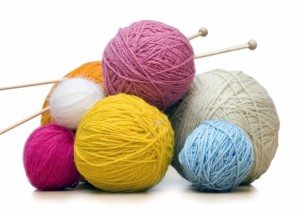 By: Linsley Oaks, LuxEco Living Editorial Assistant
By: Linsley Oaks, LuxEco Living Editorial Assistant
I have a friend who knits. A lot. She is better than any machine. She gets consignment work frequently as well as knitting gift items for her friends and family. Her knitting work is very artistic and her designs carry a deep meaning I am always fascinated to pick her brain about. She is teaching me how to knit, and I must say that my inner craft nerd is thoroughly enjoying both the process and the end products.
On several occasions, we have found ourselves casually knitting in a public place. On a lunch break in the park, on the bus, at the beach, etc. Every time, without fail, something very intriguing happens: people pay attention. People approach us. They ask questions, engage in conversation, and sometimes just stare intently while she or I or both knit. They seem captivated, drawn in, almost possessed by the simple phenomenon of someone publicly knitting. And they are not fellow knitters: oh no! People from all walks of life and of all ages and unexpected dispositions seem to share this common fascination. I even saw a man here on vacation from Texas take some footage of her knitting at the beach with his video camera. And all of this in the age of ‘looking away;’ homeless person begging for money? Look away. See a person obviously stealing a bicycle? Look away. Accidentally make eye contact with another human being in public? Look away. See a girl knitting? Engage her in conversation. Huh?
But what is really going on here? Is knitting really that fascinating to watch? After all, from a glance, all that is seen is rhythmic and subtle movements in the hand accompanied by some needles and yarn. I suspect that there is something more fundamental bubbling to the surface. It is more the act of seeing someone make something for themselves than the dance of yarn, needle, and fingers that people are intrigued by.
The production and consumption cycle in our modern world has resulted in an interesting side effect: people do not make things for themselves anymore. Well, a vast majority of people. Just think: not so very long ago, people made their own clothing, tools, household items, and so on. Basically, if you wanted something, you would have to figure out how to make it for yourself. Now, hardly anyone even knows how things are made. We do not get to see that part of the cycle. The creation or manufacturing of all the goods we rely on every day is done behind closed doors in factories far away. This has become the truth not only for household items, but for the very food we eat as well. Many children can’t even recognize ordinary fruits and vegetables in their natural pre-production state. Admittedly, I know clothing comes from cotton fibers or sheep wool and other materials, but I can not visualize how the elements that make the clothes on my body transform throughout their journey in the production cycle.
I like to think that the desire to create is within us all, and that we have somehow confused this desire to create with the desire to consume. Otherwise, why would people have such a stark and universal reaction to seeing someone knit in public? We have let ourselves overindulge in consumption and it is taking a huge toll on our environment, on our social fabric, and even on our bodies. So, take some time to create; take a break from blindly consuming, and reflect on the process of turning resources into products. Hi, my name is Linsley, I am 26 years old, I am ‘crafty’, and I am not alone.













